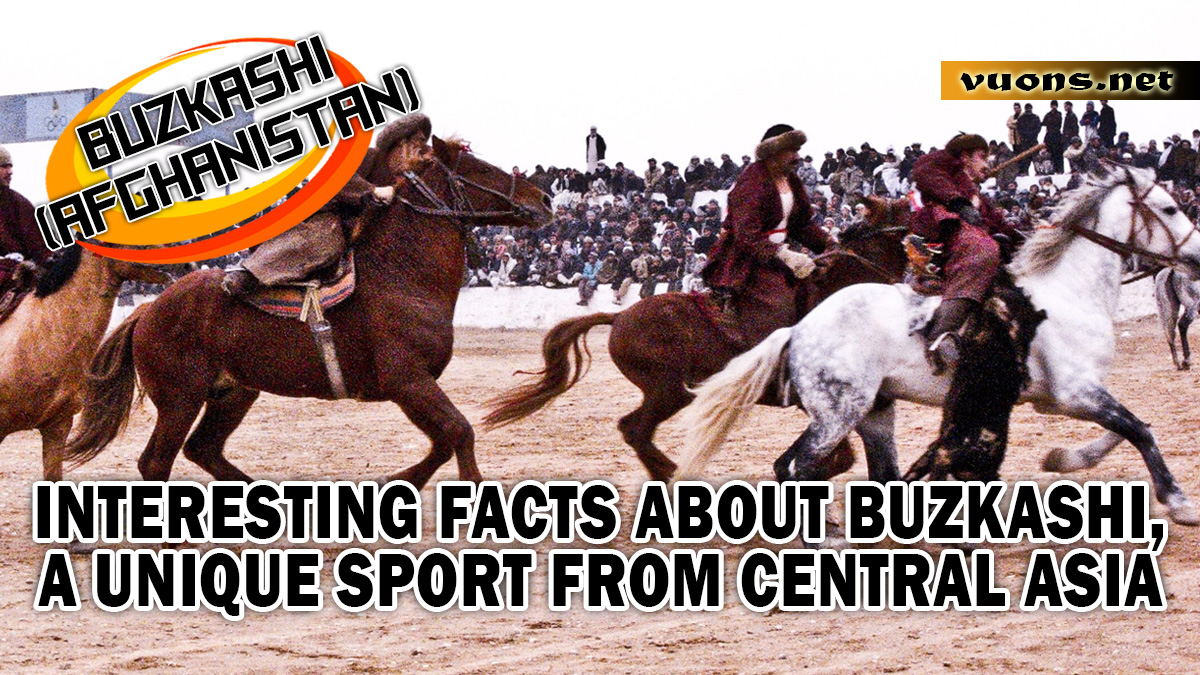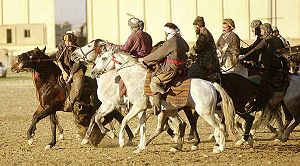Horses and Courage: The Essence of the Buzkashi Game
The Origins of Buzkashi: A Tradition That Has Endured for Centuries
Horses and Courage: The Essence of the Buzkashi Game – The Origins of Buzkashi: A Tradition That Has Endured for Centuries, originated from the life of nomadic tribes in Central Asia. The game is believed to have been born as a military exercise to train the agility of horse riding and the courage of soldiers. During the Mongol Empire, Buzkashi spread to Afghanistan and became an integral part of the local culture.
The role of the horse in Buzkashi is very important. The horses used are specially trained to survive in extreme conditions, including fighting in the middle of a crowd of players. The relationship between rider and horse is at the heart of the game, where harmony and trust are essential to win.
The chapandaz, skilled Buzkashi players, are often considered symbols of courage and toughness. They spend years training themselves and building strong bonds with their horses. Their skills are measured not only by strength, but also strategy and the ability to read the opponent’s movements.
Buzkashi is usually played at big events, such as weddings or national festivals. The atmosphere of the game is full of energy, with the audience cheering and cheering. In recent decades, Buzkashi has also undergone modernization, with some games following formal rules designed to keep the tradition relevant.
The game is more than just entertainment; Buzkashi reflects the collective spirit of Afghan society, where courage and hard work are core values.
The Important Role of Horses in Buzkashi
The Important Role of Horses in Buzkashi cannot be separated from the success of this game. In this traditional Afghan Sport, horses are the main element that determines the course of the match. The horses used are specially trained to be able to survive in intense and stressful situations.
Buzkashi horses must have speed, stamina, and strength to face the crowd of other players fighting over the goat carcass. In addition, horses are also trained to have high agility so that they can move quickly to avoid collisions or ward off opponent attempts. This skill does not only depend on physical training, but also on the strong bond between the horse and its rider.
The chapandaz (Buzkashi players) greatly appreciate the role of their horses. In the tradition of this game, horses are considered true partners who must be well cared for. Horse owners usually choose animals that have strong bloodlines, often even bringing in horses from the Central Asian region which is known to produce high-quality horses.
In every match, the audience is often amazed not only by the actions of the players, but also by the horses that show their strength and agility on the field. Many horses have become famous for their contributions to winning major events, sometimes even receiving special awards.
Horses in Buzkashi are not just tools, but symbols of the resilience and courage that are at the heart of the game. Without them, the competitive spirit of Buzkashi would not be as intense and iconic as it is today.
The Skills of the Chapandaz: Heroes in the Saddle
The Skills of the Chapandaz: Heroes in the Saddle, is one of the main elements that makes Buzkashi such an exciting sport. Chapandaz are equestrian players who have an uncanny ability to control their horses in the midst of the hustle and bustle of the game. They rely not only on physical strength but also on cunning and agility to snatch the goat carcass from their opponents.
Becoming a chapandaz takes years of intensive training. Players must learn to read the situation on the field, anticipate their opponents’ movements, and work closely with their horses. The ability to stay balanced in the saddle, even in stressful situations, is a skill that not everyone has.
Chapandaz also rely heavily on their relationship with their horses. In Buzkashi culture, horses are not just tools, but true companions. Players often take special time to build a bond with their horses, ensuring that communication between humans and animals runs smoothly during the game.
Courage is the hallmark of a chapandaz. They must face fierce competition, sometimes at the risk of serious injury. In games that often last for hours, stamina and a steely mentality are the keys to their success.
For the Afghan people, a chapandaz is a symbol of honor and courage. These players are not only considered athletes, but also as heroes who represent their fighting spirit and cultural pride. Their presence in the Buzkashi arena is always the center of attention, bringing adrenaline and a special attraction for the audience.
Symbol of Courage and Teamwork
The symbol of Courage and Teamwork is evident in every match of Buzkashi, a traditional sport that is the pride of Afghanistan. In this game, each player, or chapandaz, must show extraordinary courage amidst fierce competition. They face tough challenges, including aggressive opponent efforts and high-pressure situations on the field.
The courage of a chapandaz is not only seen from their physical abilities, but also from the steely mentality to survive the game that often lasts for hours. Meanwhile, their horses, which have been trained intensively, become loyal partners in facing any obstacles.
In addition to individual courage, teamwork is also an important element in Buzkashi. In some matches, players form temporary alliances to fight stronger opponents. Coordination between players and silent communication on horseback are key to seizing the goat carcass and leading the team to victory.
Buzkashi is often seen as a reflection of the values of Afghan society, where courage and teamwork are the foundation of everyday life. The game is not just about physical strength, but also strategy and solidarity. In local culture, a chapandaz who is able to work well together and show courage will always be respected, both in and out of the arena.
Each Buzkashi match is not only a competition, but also a stage to display the deep values that shape the identity of the community. The courage and teamwork seen in this sport are symbols of a collective spirit that is passed down from generation to generation.




